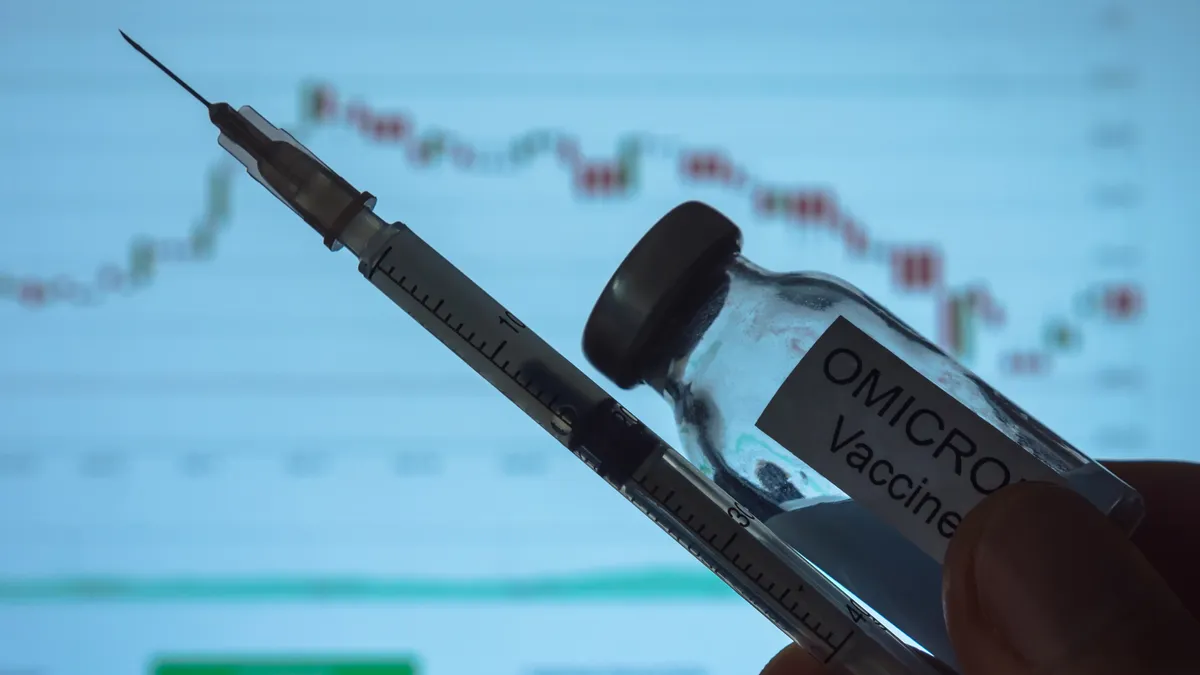Collaborating for a Cure
Walter Capone, President of the Multiple Myeloma Research Foundation, talks about data sharing, open access to research, and how collaborative research can lead to new therapies.
PV: How did the open access data portal, the MMRF Researcher Gateway, get started?
CAPONE: The MMRF came into being from our founder Kathy Giusti’s vision of trying to fix a broken cancer research system. (See the PharmaVOICE 100 2014.) The overarching premise of the foundation is to act as a virtual drug development entity to optimize and accelerate the drug development process from discovery and identification of new targets to validation and translational research on therapies for those targets, whether first-in-man or pivotal studies in the myeloma field while continually working with patients, companies, and the FDA to get drugs approved.
In the 16 years since the foundation was started, we’ve raised a quarter of a billion dollars to help support and fund researchers around the world through more than 300 grants to 130 institutions to do early-stage research and drive innovation. In parallel, we’ve conducted 53 trials for 27 new drugs to move them rapidly through the different phases of development and, ultimately, to registration.
More recently, the MMRF Researcher Gateway and the MMRF CoMMunity Gateway are addressing two distinct audiences but all for the fundamentally same premise of accelerating the best and the most novel breakthroughs and therapies for patients and helping drive to a cure. The Researcher Gateway was launched in September 2013 and is the data repository and the first open science collaborative forum for a major longitudinal and groundbreaking study in any disease that we are aware of.
The CoMMpass Study that we launched in July 2011 is the source for most of the gateway data right now, along with our Genomics Initiative. The CoMMpass Study was developed to map and share the complexities of myeloma. There are at least 10 different subtypes of the disease that we know of right now that are predominate. In any individual, four different subtypes of myeloma compete for dominance within patients.
We wanted to establish some type of effort to manage this disease data and not just from a clinical, drug, patients, or outcomes standpoint. We wanted to manage the data from a molecular standpoint and look at very detailed and exquisite whole genome and RNA sequencing on every patient from the first diagnosis before they are treated to the best response and any relapse they might have. All of these data — the genomic data, the clinical data, and the outcomes data — are being captured and reflected in MMRF Researcher Gateway as part of the CoMMpass Study.
That repository also houses and has the output from the MMRF Genomics Initiative that was launched in 2007. This was the first definitive comprehensive mapping of myeloma so far, where the characterization of the disease, its multiple subtypes overall and within the patient, was first described and reflected.
PV: Who can access the data?
CAPONE: The Researcher Gateway is an open access portal. This is the primary place where researchers from around the world can tap into the data. They sign in by providing their credentials, their affiliation, and then they are given access to the data. That data are updated every six months and timed with the interim analyses that we conduct on the CoMMpass Study.
Right now, the Gateway is for institutional research. There are four companies that have helped us to subsidize this study through a public and private sponsorship. But considering that this is a $40 million endeavor over the course of 10 years, having these data available to pharma companies without paid access won’t be sustainable. We are working on the details of an arrangement for commercial entities such as pharma companies to access this information.
PV: Do you see any trends in how researchers are using the data?
CAPONE: The patterns of use do come down to researchers trying to understand the patient profile or severity of myeloma as it presents in the initial diagnosis and trying to map the molecular composition of the patients’ respective myeloma types for the therapies that will be responsive.
Additionally, we see scientists and researchers looking at targets to try to understand any commonalities that contribute to more rapidly progressing patients versus those that seem to have less aggressive myeloma and why that might be.
PV: How can this model be duplicated in other cancers and diseases?
CAPONE: Many of the companies that we are working with in our area are asking us to bring this approach to other indications they are working on where there is no MMRF. We are working with organizations such as the Pancreatic Cancer Foundation, the Melanoma Research alliance, and others outside of cancer, such as the Michael J. Fox Foundation, to transfer what we’ve built here. The models are readily and easily transferable to other disease areas.
The models we’ve built revolve around the ideals of collaborative research and collaborative consortia focused on the end goal of rapidly identifying the best science and the best programs and advancing them relentlessly. We bring together a consortium of research centers to work under a common agreement that lets them collaborate in ways that would normally be competitive. For example, it could involve establishing a tissue bank or processing facility and then collaborating on the proteomic, genomic, or epigenetic characterization of the disease.
Now with the Gateways in place, we’ve established a way for group science to happen more readily. Even the CoMMunity Gateway where patients, if they provide as much information as they want about their therapies and disease, will have content driven to them. The information might be about studies or trials they might qualify for or other patients or experts with information on their particular issue. These models are transferable.
PV: How does this open model for research and discovery work?
CAPONE: We bring together disparate groups together that wouldn’t ordinarily collaborate because they know they will all benefit. This is the fundamental premise of open collaboration. Enabling this collaboration is knowing that information and data are able to be developed more rapidly and more cost-effectively than before. The socialization platforms that exist now, which didn’t exist even five years ago, provide the ability to make connections and to create initiatives where very diverse sets of scientific backgrounds are brought together to solve a common problem. This is also accelerating research and removes the ossified type of approach that existed in the prior decade.
Digital Edition Bonus Content
Collaborative Models Built on Partnership and Integration
The MMRF has forged a courageous and dynamic approach to the methodology of cancer research.
By overcoming previous pitfalls that held the industry back, the Multiple Myeloma Research Foundation (MMRF) has propelled the frontier of multiple myeloma research to a new level. Essential to this approach are four groundbreaking initiatives that have revolutionized the way research and drug development are conducted. With these models, the MMRF can dramatically accelerate the pace at which lifesaving and new life-altering drugs can be brought to patients.
1. Multiple Myeloma Research Consortium (MMRC)
Today, the MMRC leads 16 entirely integrated member institutions propelled by highly defined metrics that mandate accountability and promote team-based science — a concept previously novel to the industry. The MMRC has campaigned more than 30 trials of today’s most auspicious compounds and combinations where more than 1,000 patients — many of whom had run out of options — received life-saving treatment. Notably, the MMRC began trials 60% faster and enrolled patients 10% faster than the industry standard. MMRC clinical trials currently have eight drug studies entering the last steps before FDA approval.
2. MMRC Tissue Bank
Launched with the MMRC in 2004, this is the first and largest multicenter, GLP-quality biobank that integrates patient tissue samples with corresponding laboratory and clinical data. The tissue bank provides researchers with an unprecedented critical mass of more than 3,500 bone marrow aspirates and matched peripheral blood samples. For the first time, this allows them to conduct cutting-edge genomics studies as well as correlative science studies associated with MMRC clinical trials.
3. Multiple Myeloma Genomics Initiative (MMGI)
With the MMRC Tissue Bank serving as a cornerstone, the MMRC aligned its strategy with the Broad Institute and TGen to launch MMGI in 2006. MMGI is the world’s leading comprehensive genome-mapping methodology of its kind. Its objective is to uncover the genes and molecular pathways involved in myeloma, and to identify new targetable, vulnerable, and druggable aspects of the disease. In 2009, the MMGI took another step forward with unparalleled advancement in myeloma genome mapping and has currently mapped the genomes of 100 patients and counting. All research is channeled into a public portal prior to publication. To date, more than 900 researchers across the globe have accessed this intelligence.
4. Multiple Myeloma Personalized Medicine Initiative
The MMRF has never stopped pursuing all outlets of innovation in racing toward the goal of eradicating multiple myeloma. One such endeavor is personalized medicine. Supported by the MMRF’s broad influence over clinical studies and the genomics industry, the Multiple Myeloma Personalized Medicine Initiative was founded in 2011. A cutting-edge program that aims to match patients with treatments customized to their individual molecular profile, the CoMMpass study is an essential pillar of the Multiple Myeloma Personal Medicine Initiative. It is currently the first and largest study of its kind to focus on disease progression and response to treatment based on patients’ genomic or molecular profiles. Similar to the MMGI, data from CoMMpass will be placed prior to publication into a public portal. More importantly, academic and pharmaceutical industry partners in this initiative have given up rights to any inventions, which will undoubtedly speed the drug-discovery process. CoMMpass is now enrolling patients at community and academic centers nationwide.
For more information, visit themmrf.org/about-the-mmrf/collaborative-models/#sthash.0xITDr7q.dpuf
Founded by Kathy Giusti in 2004, the Multiple Myeloma Research Consortium was the first clinical network that brought together leading academic centers solely
dedicated to Phase I and Phase II clinical trials.
Partnership Model Drives Innovation
Resolute in the mission to help as many patients as possible, the MMRF has shared its models with many research organizations, opening the door to great leaps in innovation to advance treatment for a multitude of cancers and other life-altering diseases. The chart shows how MMRF’s collaborative techniques have helped confront and solve specific challenges to yield significant results and new innovations in patient care.
Chart


















